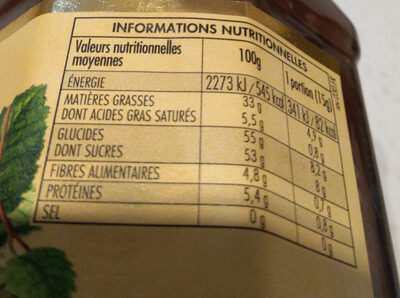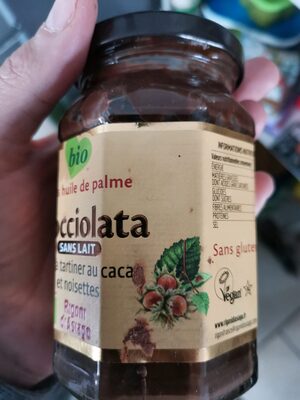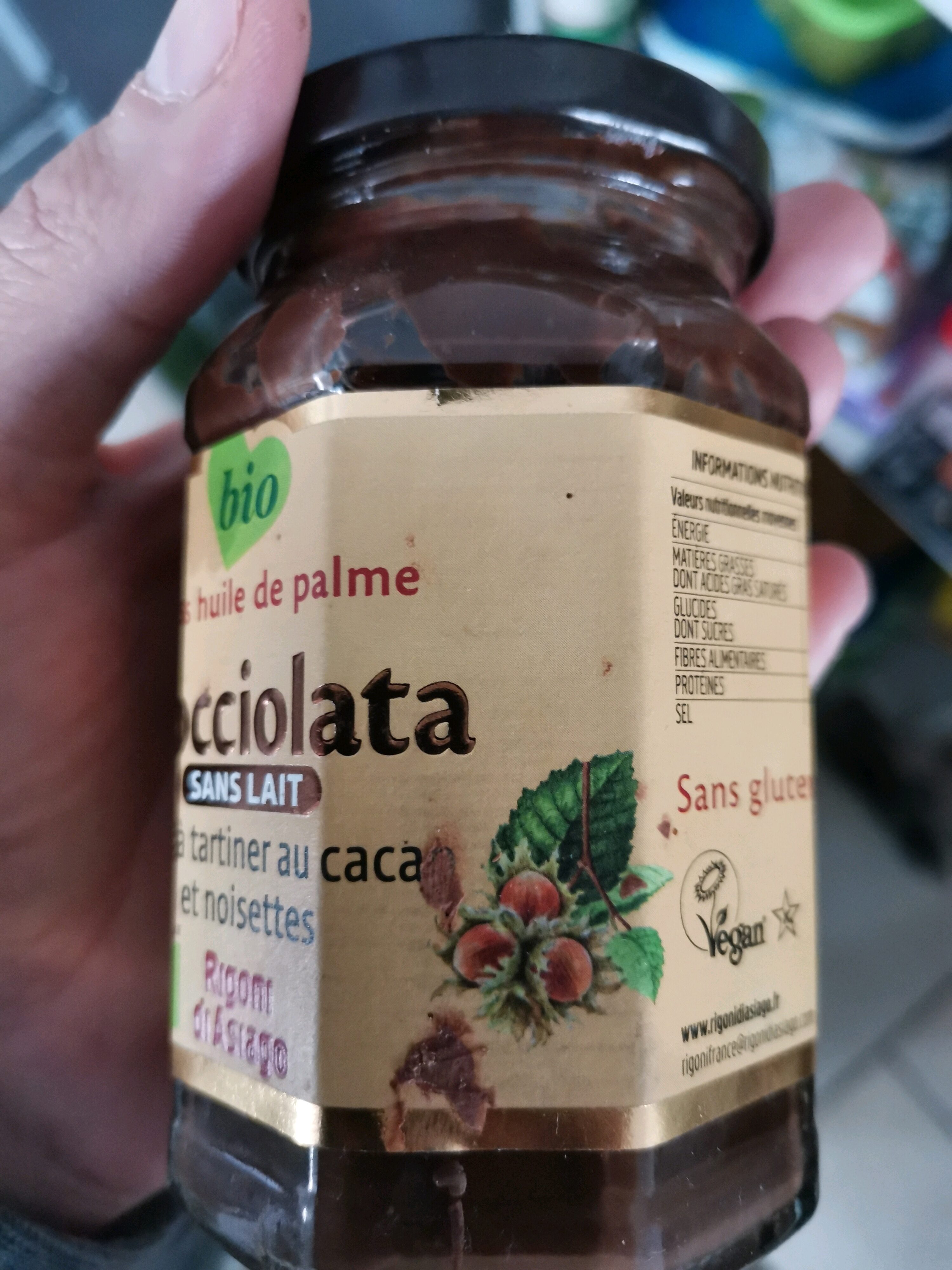pâte à tartiner au cacao et noisettes - nocciolata - 270g
This product page is not complete. You can help to complete it by editing it and adding more data from the photos we have, or by taking more photos using the app for Android or iPhone/iPad. Thank you!
×
Barcode: 8001505000061 (EAN / EAN-13)
Allgemengen Numm:: Pâte à tartiner à la noisette
Quantitéit: 270g
Verpackungsart: en:Glass, en:Jar
Marken: Nocciolata
Kategorien: en:Breakfasts, en:Spreads, en:Cocoa and its products, en:Sweet spreads, fr:Pâtes à tartiner, en:Hazelnut spreads, en:Chocolate spreads, en:Cocoa and hazelnuts spreads
Labelen, Zertifizéierungen, Auszeechnungen:
en:No gluten, en:Organic, en:Vegetarian, en:EU Organic, en:Non-EU Agriculture, en:Vegan, en:EU Agriculture, en:EU/non-EU Agriculture, IT-BIO-007, en:No palm oil, The Vegan Society, AB Agriculture Biologique


Link to the product page on the official site of the producer: http://www.rigonidiasiago.fr/index.html
Geschäfter: Auchan, Magasins U, carrefour.fr, Leclerc
Country: Frankräich, Lëtzebuerg (Land), Schwäiz
Matching with your preferences
Report a problem
Data sources
Product added on vun akasha22
Last edit of product page on vun nutrinet-sante.
Produkt Säit och geännert vun aelhie, alextrt, aneth22, anonymousgeek, date-limite-app, driveoff, ecoscore-impact-estimator, ethic-advisor.e1d88aa7-bed2-4788-a654-e986ef826bec, hungergames, inf, justine-inrae, kiliweb, magasins-u, minikurt, moon-rabbit, off.9c44c50a-f723-4844-8097-c0163c179f4a, openfoodfacts-contributors, packbot, quentinbrd, roboto-app, romain2boss, scanbot, smoothie-app, yd31, yuka.R0lFbk1xTmNpc0FPZ01VazEwTE1xOEpseUxDR1EyYU9Jdm9QSWc9PQ, yuka.SEtRUUw1ODZoT2NXeHZZNTBEL0U1K0owMlpId1lVem5Cc0VkSVE9PQ, yuka.SFlNNkcva2svS2tTbE1ZSHBUN3o5czlNNllENVpET3BPOE0xSVE9PQ, yuka.U0tsY05hRWZuc1FNa01FR29oS08rOVZjN2JLREJEeXZKN0FnSVE9PQ, yuka.UmFVRUZZY1luZFVOdU1FNnhoSEw4Tmh3emNPb2ZrT2FNZW92SVE9PQ, yuka.UnJvaUdyOC9oZG8wblBjYi9SN3ovdFJ4d3FMMkJrU3djcnNxSVE9PQ, yuka.V2I0bEFwMEx1OUFRdU1KaCtSYlMwZkJIeTVpN1d6anZGK1lPSWc9PQ, yuka.VEs4UkFmb04rOEVKcGNRbi9UM0o4TmxXL2NhUURFYnBOL1EwSVE9PQ, yuka.VFowUEQ0MHMvZVV4dC9JQjdpR044WTVQOTRhVlpqNnZOdlpBSUE9PQ, yuka.WExnUkRZc3V0Nk1ydU1GaDV6YmYvL05iMXNhd1RGS3NGZEFRSWc9PQ, yuka.WklVL0RZczkrZWswdy9FVHBoYit4b0pTL2FlMlJqK3dMN29TSWc9PQ, yuka.WmZnUUxxY2hnOGd1a2ZBbTNBTDR5TkZMeXBLUVpXS3NFczFPSVE9PQ, yuka.WnI1WktiWlFsS2NPc3NNNjNURE02NGhybkp6M0FHbVVMN013SVE9PQ, yuka.YVA4cklwa3NnL3N5bGYwQjBRenQ0OTkxN0xTT1EyS0ZNdWNzSVE9PQ, yuka.YmJnQUhJMGUvcUU2bi9BMTJDL3YwT3hVd2NhaWJXcXVjL1lXSWc9PQ, yuka.ZklReUVZNVptT01idFBZK3BSTExvOVZNN0thUFFEK0dETklXSVE9PQ.














